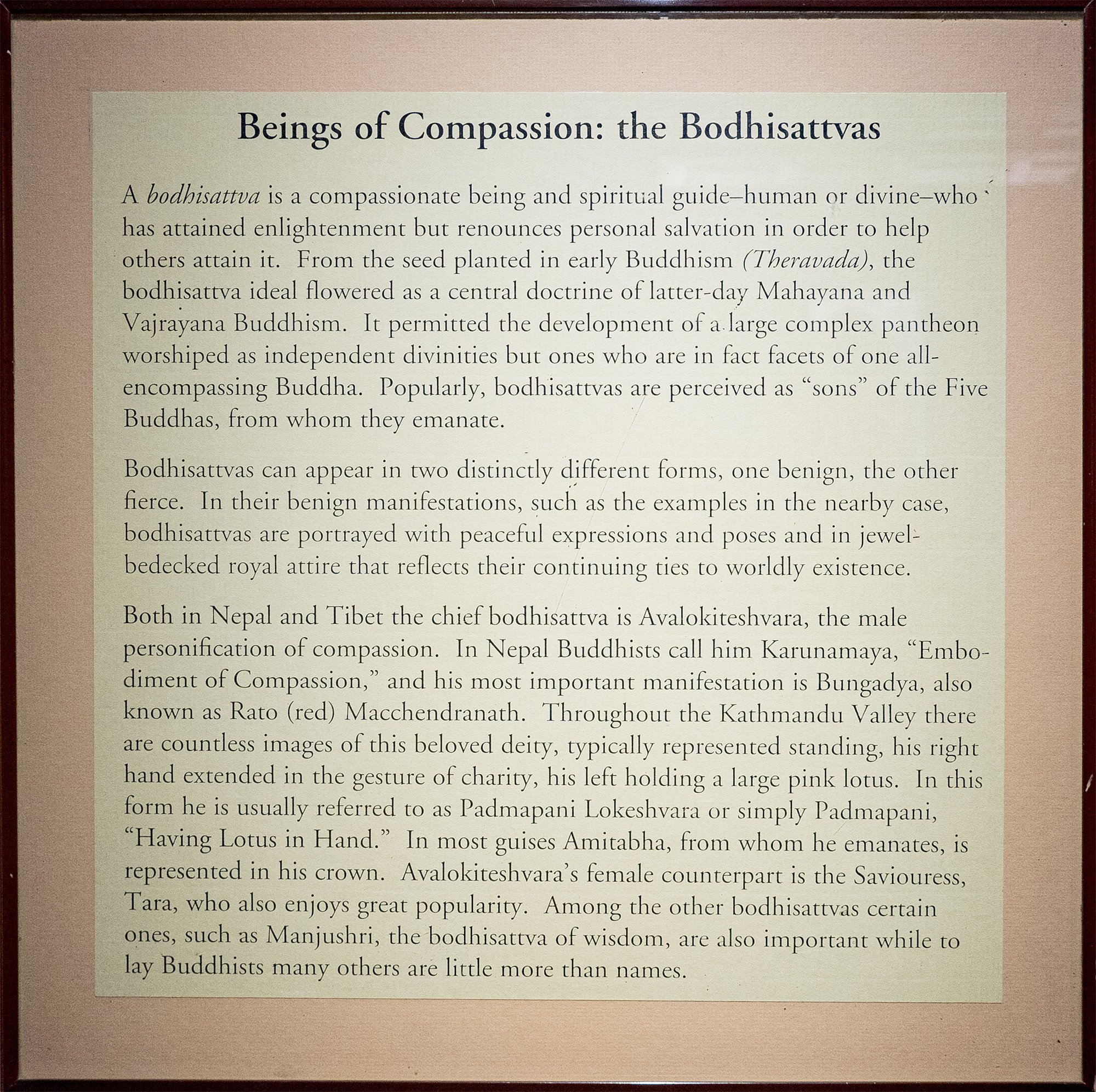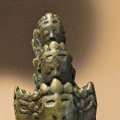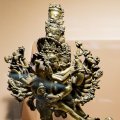Patan Museum (Nepal): photo 69
Photo 69 of 212 in Gallery: Patan Museum (Nepal)

Image title: Bodhisattvas (Beings of Compassion)
Description of the photo
Beings of Compassion: the Bodhisattvas—A Bodhisattva is a compassionate being and spiritual guide—human or divine—who has attained enlightenment but renounces personal salvation in order to help others attain it. From the seed planted in early Buddhism (Theravada), the Bodhisattva ideal flowered as a central doctrine of latter-day Mahayana and Vajrayana Buddhism. It permitted the development of a. large complex pantheon worshiped as independent divinities but ones who are in fact facets of one all-encompassing Buddha. Popularly, Bodhisattvas are perceived as “sons” of the Five Buddhas, from whom they emanate.
Bodhisattvas can appear in two distinctly different forms, one benign, the other fierce. In their benign manifestations, such as the examples in the nearby case, Bodhisattvas are portrayed with peaceful expressions and poses and in jewel-bedecked royal attire that reflects their continuing ties to worldly existence.
Both in Nepal and Tibet the chief Bodhisattva is Avalokiteshvara, the male personification of compassion. In Nepal Buddhists call him Karunamaya, “Embodiment of Compassion,” and his most important manifestation is Bungadya, also known as Rato (red) Macchendranath. Throughout the Kathmandu Valley there are countless images of this beloved deity, typically represented standing, his right hand extended in the gesture of charity, his left holding a large pink lotus. In this form he is usually referred to as Padmapani Lokeshvara or simply Padmapani, “Having Lotus in Hand.” In most guises Amitabha, from whom he emanates, is represented in his crown. Avalokiteshvara’s female counterpart is the Saviouress, Tara, who also enjoys great popularity. Among the other bodhisattvas certain ones, such as Manjushri, the Bodhisattva of wisdom, are also important while to lay Buddhists many others are little more than names.
Gallery information:
The Patan Museum is located on the Durbar square of Patan (Lalitpur/Lalitapura, Kathmandu, Nepal) which is associated Keshav Narayan Chowk (Keshavnarayan)—a form of Lord Vishnu. Being listed as a World Heritage Site, the whole of Durbar square is filled with exquisite temples, sculptures and other ancient structures, of which the ancient history history can be traced to the Malla Kings of Lalitpur. It is an important site for both Buddhism and Hinduism.
Photo details:
Date: 2019-12-02
Camera: SONY ILCE-6400
Exposure: 1/160
Aperture: f/4
ISO: 1000
Focal length: 18mm
High resolution:
Download file
Size: 2.18 MB
Resolution: 2000 x 1993
© Photograph by Gabe Hiemstra.
License: CC BY-NC-ND 4.0

